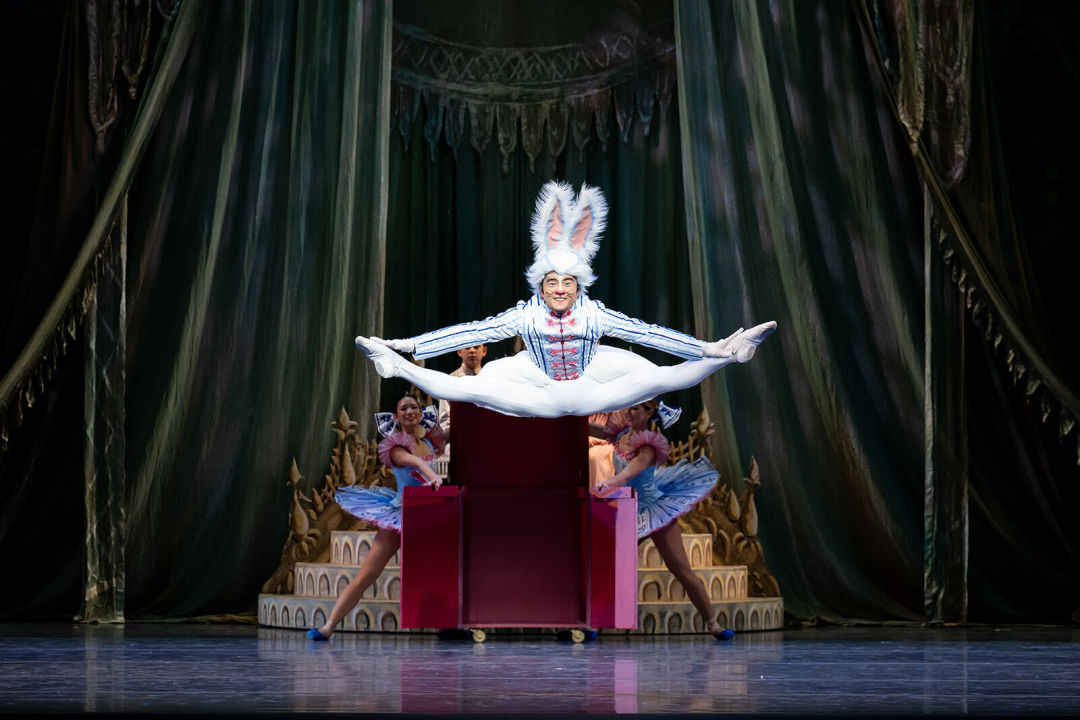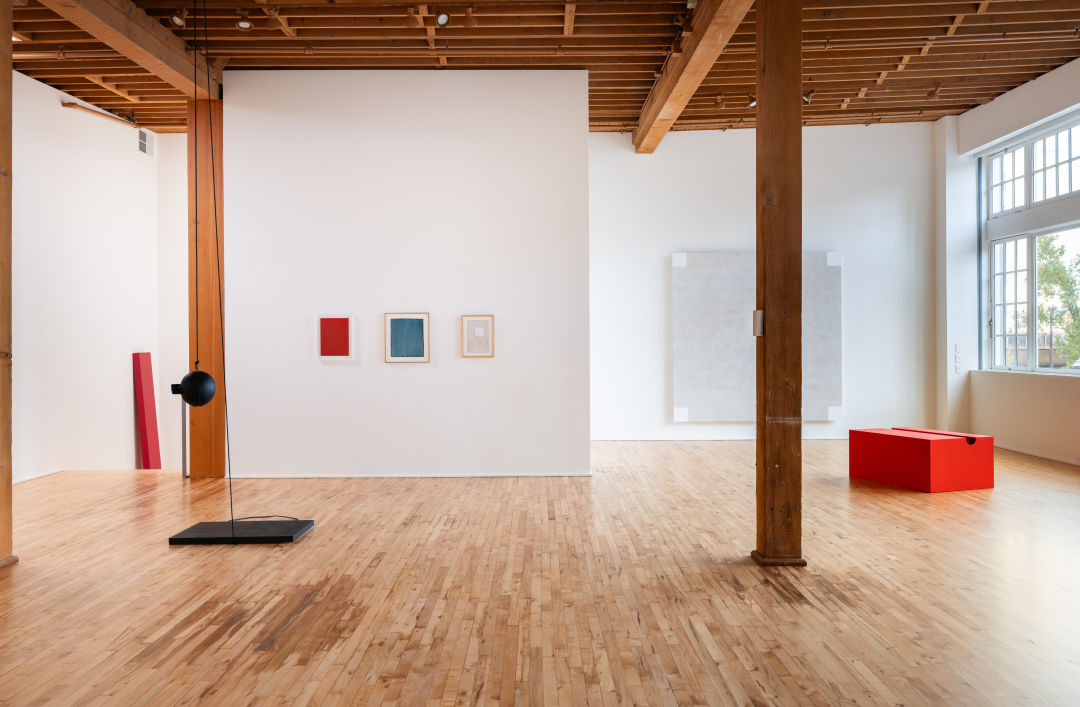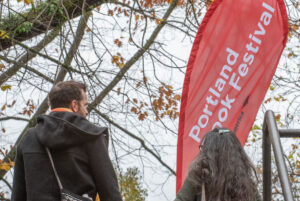George Balanchine’s Nutcracker, Minus the Racial Stereotypes

Nicholas Sakai as the White Rabbit in Oregon Ballet Theater’s updated production of George Balanchine’s The Nutcracker.
You’re reading a past edition of our weekly Things to Do column, about the concerts, art shows, comedy sets, movies, readings, and plays we’re attending each week. Read the current installment. Sign up to receive it in your inbox.
Any good gift inspires at least a little jealousy. A dose of mimetic desire via some tasteful flaunting is baked into the ritual of opening presents. Between siblings, the ordeal can get especially contentious, like when, in most versions of The Nutcracker, Fritz breaks Marie’s new toy in a fit of jealousy. The damage is easily remedied, but it’s the first hurdle Marie faces on a hugely symbolic journey. By midnight, she will be off in an imagined utopia, a child’s fantasy love story that ends, like the best love stories, in a world of anthropomorphized candy. The Oregon Ballet Theatre has swept Portland into George Balanchine’s surreally sweet second act for over two decades now and is running an excitingly revised production of the Christmas ballet at the Keller Auditorium through Christmas Eve ($32).
Onstage, The Nutcracker’s massive ensemble conjures the mixed chaos and joy of a holiday gathering, and the mood usually filters into the seats. Attending is an event. People dress up. But the racial stereotypes in Balanchine’s original program have made participating in the iconic ballet difficult for many people, whether as a dancer or audience member. The “Chinese Tea” scene, which has dancers in cliché Fu Manchu mustaches, rice paddy hats, and yellow face paint, is most egregious. With input from dance writer and choreographer Phil Chan, among several other consultants, Balanchine’s New York City Ballet “toned down” the scene in 2017 after complaints. Inspired by the success, Chan cofounded Final Bow for Yellow Face, an initiative to carry out similar revisions to enduring classical ballets—many of which could use a modern perspective—and a pledge to remove “yellow face” from shows.
Chan also worked with OBT ahead this year’s Nutcracker production. Instead of softening the offensive tea divertissement, the program features a thoroughly revised scene, “White Rabbit,” that hinges on a much more nuanced reference to a popular Chinese candy—substituting representation for exoticization. Marie’s method, that candy is almost always the answer, won out.
More Things to Do This Week
comedy Melissa Villaseñor
Various times Thu–Sun, Dec 19–21 | Helium Comedy Club, $24–44
Impressions are Villaseñor’s thing, and the former SNL cast member’s stand-up makes full use of her multifarious personae. Onstage, she flips casually between characters. Her shows have a true “just hanging out” feel, which sets her uncanny impressions up to come on like a jolt. Her jokes are more about setting up scenarios than landing a witty punch line, like putting you in-scene with Adam Sandler, Britney Spears, Owen Wilson—and, spitefully, with Maroon 5 (“They suck”).

Installation view of A Stone in a Field at the Lumber Room.
visual art A Stone in a Field
By appointment thru Feb 28, 2025 | Lumber Room, FREE
With a formidable list of twentieth-century artists, the Lumber Room’s winter show asks what ’60s and ’70s Minimalism’s role is in today’s society. Works from Agnes Martin, Yves Klein, Louise Bourgeois, Donald Judd, and more than a dozen others trace the movement’s legacy and represent its aims for the present. Though sometimes received as opaque or esoteric, Minimalism’s reductive conceit was a way to decenter attention on the artist, and instead prioritize the viewer’s interaction with the work. The art “happens” only in dialogue. That is, you don’t need an art history degree to understand, you just need to be willing to sit and talk to it. “Anyone who can sit on a stone in a field awhile can see my paintings,” Agnes Martin once wrote.
theater Little Shop of Horrors
Nov 29–Dec 21 | Triangle Productions!, $20–40
Audrey II, everyone’s favorite bloodthirsty plant, returns to the stage of Triangle Productions! for the holiday season. The campy classic about a florist’s assistant who accidentally grows a carnivorous plant started where the best things do, very far off Broadway, in 1982. It’s bounced around high- and lowbrow theaters ever since, and of course was immortalized in Frank Oz’s 1986 movie.
What We’re Reading About Elsewhere
- PoMo senior editor Rebecca Jacobson proselytizing the good word of cross-country skiing. (City Cast)
- The streams and creeks beneath the city. (Oregon Humanities)
Share this content:















Post Comment